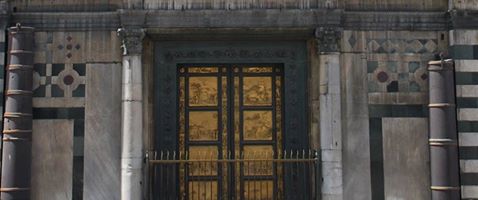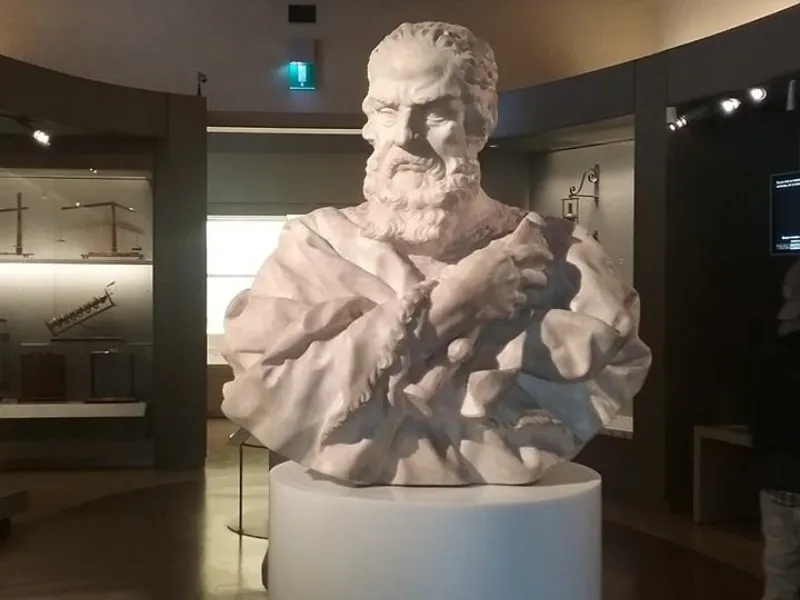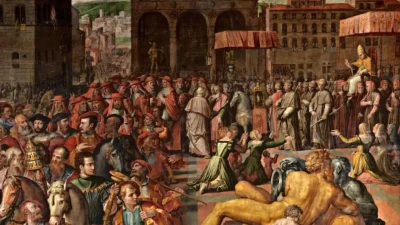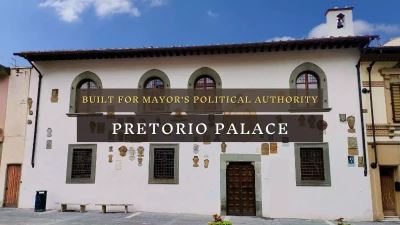Did Florence receive a gift from Pisa
Did Florence receive a gift from Pisa
The copy of the "Gates of Paradise" of the Baptistery obviously catch our attention but the two porphyry columns situated next to the door represent a particular gift Pisa made to Florence, its fierce enemy. Why? Because Florentine population helped Pisa to fight against Saracens in the Balearic Islands in 1117. These columns were part of the booty Pisa sacked during the war with gold, silver, precious stones, marble objects, carpets, cloths. The legend said that the columns had a particular characteristic: they could reflect the faces of unpunished people, killers who had committed a crime and they were still free.
Florence moved the two columns from Pisa on a boat on the river Arno and the city feasted their arrival. Florentine realized very soon the columns weren't glossy and they didn't have the magic characteristic. It was true! Pisa in fact secretly set up a fire the night before the boarding to warm up the columns. Their brilliance disappeared forever! The Pisan gift became a trick and for this reason the bitterness between the two cities increased very much during the following years.
As the saying goes: " Florence is blind and Pisa is a traitor" Event the famous poet Dante Alighieri in his Comedy says Florence is renowned to be a too-confident city. Read the passage of the Hell (XV, 67)!

Altri articoli

Galileo Galilei kneels in front of the church
In 1632 the scientist published his "Discorso sui massimi sistemi" and he risked to be burnt at the stake

Two particolar details
Giorgio Vasari and Giovanni Stradano painted the "Arrival of the Pope In Florence" between 1555-1562.

Pretorio Palace
The restoration works conducted in 2020-2021

The funeral mask
The Dante funeral mask, once thought real, is now believed a lost sculptural portrait. Donated to Florence in 1911, found in Ravenna in 1830.

